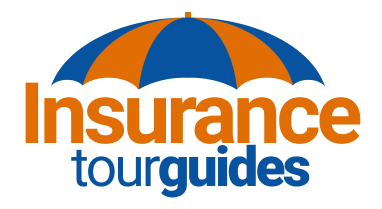Auto insurance is essential for protecting yourself and your vehicle, but it doesn’t have to be a significant financial burden. By implementing a few smart strategies, you can reduce your auto insurance premiums without sacrificing coverage. Here are some effective tips for saving on auto insurance, including bundling policies, maintaining a clean driving record, increasing deductibles, and taking advantage of discounts.
Bundle Policies
1. Multi-Policy Discount: Many insurance companies offer discounts if you bundle multiple policies with them, such as auto and home insurance. This can lead to significant savings on both policies. Check with your insurance provider to see if they offer a multi-policy discount and compare the savings with keeping separate policies.
2. Multi-Vehicle Discount: If you insure more than one vehicle with the same company, you may be eligible for a multi-vehicle discount. This is particularly beneficial for families with multiple cars.
Maintain a Clean Driving Record
1. Drive Safely: Safe driving is one of the most effective ways to keep your insurance premiums low. Avoid accidents, traffic violations, and DUI offenses. Insurance companies reward safe drivers with lower rates.
2. Defensive Driving Courses: Taking a defensive driving course can help you become a safer driver and may qualify you for a discount on your auto insurance. Check with your insurance company to see which courses are recognized for discounts.
3. Monitor Your Driving: Some insurance companies offer usage-based insurance programs that monitor your driving habits through a mobile app or a device installed in your vehicle. If you drive safely, you can earn discounts based on your good driving behavior.
Increase Deductibles
1. Choose a Higher Deductible: The deductible is the amount you pay out-of-pocket before your insurance kicks in. Choosing a higher deductible can significantly reduce your monthly premiums. However, make sure you can afford the higher deductible in case of an accident.
2. Evaluate Your Risk: If you’re a safe driver with a low risk of accidents, opting for a higher deductible can be a smart way to save money on premiums. Just ensure you have enough savings to cover the deductible if needed.
Take Advantage of Discounts
1. Good Student Discount: If you or a family member is a student with good grades, you may qualify for a good student discount. Many insurance companies offer this discount to full-time students who maintain a certain GPA.
2. Low Mileage Discount: If you don’t drive often or have a short commute, you may be eligible for a low mileage discount. Insurance companies often provide lower rates for drivers who put fewer miles on their vehicles each year.
3. Safety Features Discount: Vehicles equipped with safety features such as anti-lock brakes, airbags, and anti-theft devices may qualify for discounts. Inform your insurance company about any safety features in your vehicle to see if you’re eligible for a discount.
4. Loyalty Discount: Some insurance companies offer discounts to long-term customers. If you’ve been with the same insurer for several years, ask if you qualify for a loyalty discount.
5. Membership Discounts: Certain organizations and associations have partnerships with insurance companies that offer discounts to their members. Check if any memberships you hold, such as alumni associations or professional organizations, provide access to discounted insurance rates.
Shop Around
1. Compare Quotes: Insurance rates can vary significantly between companies, so it’s essential to shop around and compare quotes. Use online comparison tools to get multiple quotes and find the best rate for your needs.
2. Reassess Annually: Your insurance needs and the rates offered by insurance companies can change over time. It’s a good practice to reassess your coverage and compare quotes annually to ensure you’re getting the best deal.
3. Ask About Discounts: When getting quotes, ask insurance agents about any available discounts. They may not always be advertised, so it’s worth inquiring to ensure you’re maximizing your savings.
Maintain Good Credit
1. Monitor Your Credit Score: Many insurance companies use credit scores as a factor in determining premiums. Maintaining a good credit score can help you secure lower rates. Regularly check your credit report for accuracy and take steps to improve your score if necessary.
2. Pay Bills on Time: Paying your bills on time, reducing debt, and avoiding unnecessary credit inquiries can help improve your credit score, which in turn can lead to lower insurance premiums.
Consider Usage-Based Insurance
1. Pay-As-You-Drive: Usage-based insurance programs, such as pay-as-you-drive, charge premiums based on the number of miles you drive. If you’re a low-mileage driver, this type of insurance can offer substantial savings.
2. Telematics Programs: Telematics programs use a device installed in your car or a mobile app to monitor your driving habits, such as speed, braking, and acceleration. Safe driving behaviors can earn you discounts on your premiums.
Review Your Coverage
1. Assess Your Coverage Needs: Regularly review your coverage to ensure it matches your current needs. If your car is older and has depreciated in value, you might consider dropping comprehensive and collision coverage to save on premiums.
2. Adjust Coverage Limits: Ensure your coverage limits are appropriate for your financial situation. While it’s essential to have sufficient coverage, you don’t want to pay for more than you need.
Conclusion
Saving on auto insurance involves a combination of safe driving, strategic choices, and taking advantage of available discounts. By bundling policies, maintaining a clean driving record, increasing deductibles, and shopping around for the best rates, you can significantly reduce your auto insurance premiums. Regularly review your coverage and explore different discount opportunities to maximize your savings and keep your auto insurance costs manageable.

